Use the Melrose Labs SMPP Load Balancer cloud and on-premises platform with your messaging platform, SMS gateway or SMSCs to provide a high availability endpoint for your customers, insulate your platforms from the Internet, and optimise SMS traffic loading.
The SMPP Load Balancer service provides an endpoint to which your customers connect using the SMPP protocol to submit messages for delivery to mobiles and receive messages from mobiles. SMPP connections over TCP, with or without TLS, can be load-balanced at the transport layer (layer 4) onto our SMPP Load Balancer nodes. Messages submitted via those customer connections are load-balanced (layer 7) across the target platforms you define.
Benefits
The use of the SMPP Load Balancer service can bring the following benefits:
- Manage customer traffic load.
- Reduce exposure of platforms to the Internet.
- Improved availability.
- Reduced customer impact from upstream platform failures.
- Enables platform maintenance without service impact.
- Improved utilisation of resources.
Platform Versions
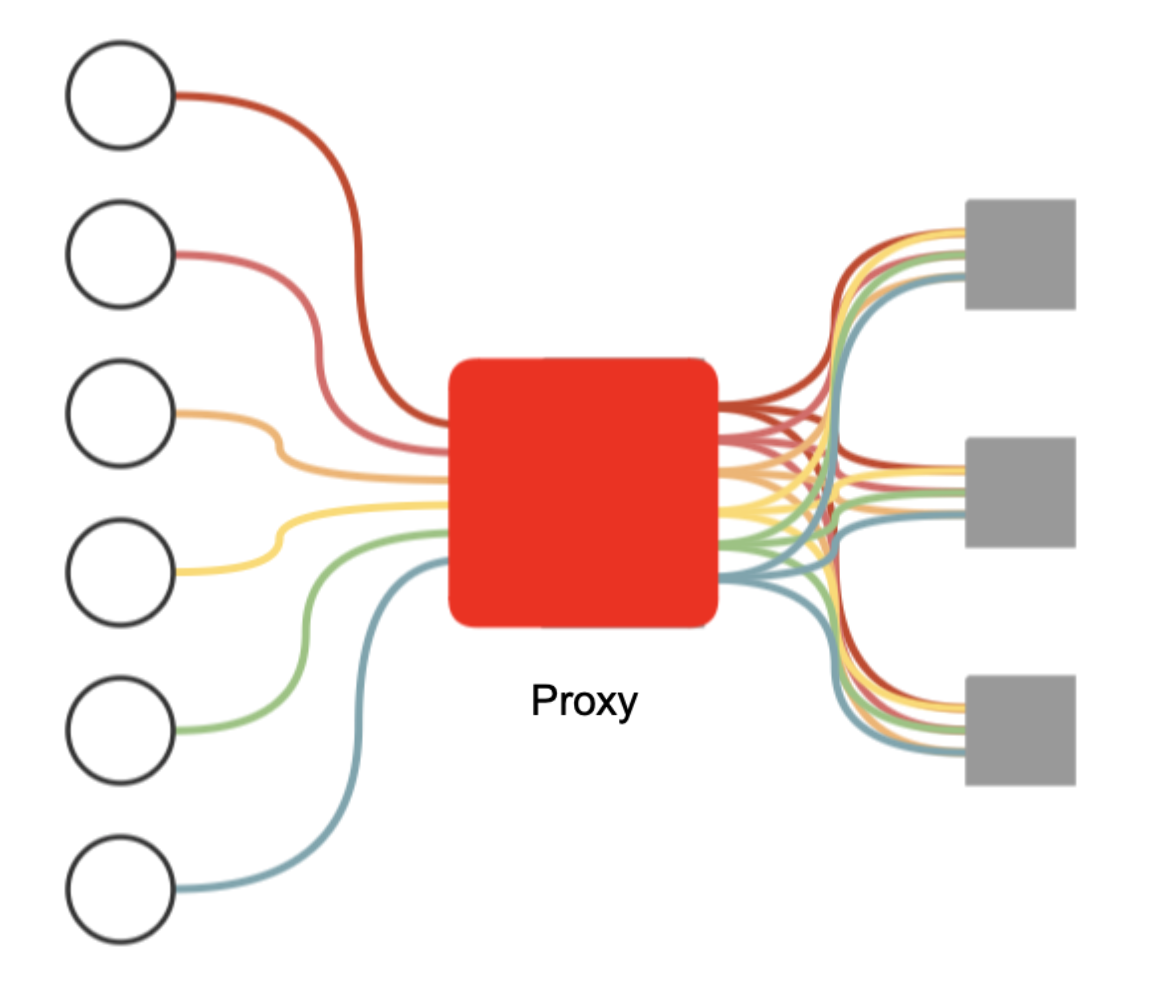
SMPP Load Balancer Proxy
Customer-facing endpoint that proxies traffic onto your platforms using customer credentials
The service proxies SMPP submit_sm requests to your platforms. SMPP binds are made from the service to your platforms using the customer's SMPP credentials, and only SMS traffic sent by that customer is routed to your platforms using their credentials. Delivery receipts and MO SMS are routed back to the customer as though they had directly connected to your platforms. No customer accounts need to be configured in the SLBP unless routing based on customer system ID. Only the host and port for each of your platforms are required to be configured in the SMPP Load Balancer service.
Also suitable as supplier-facing endpoint.
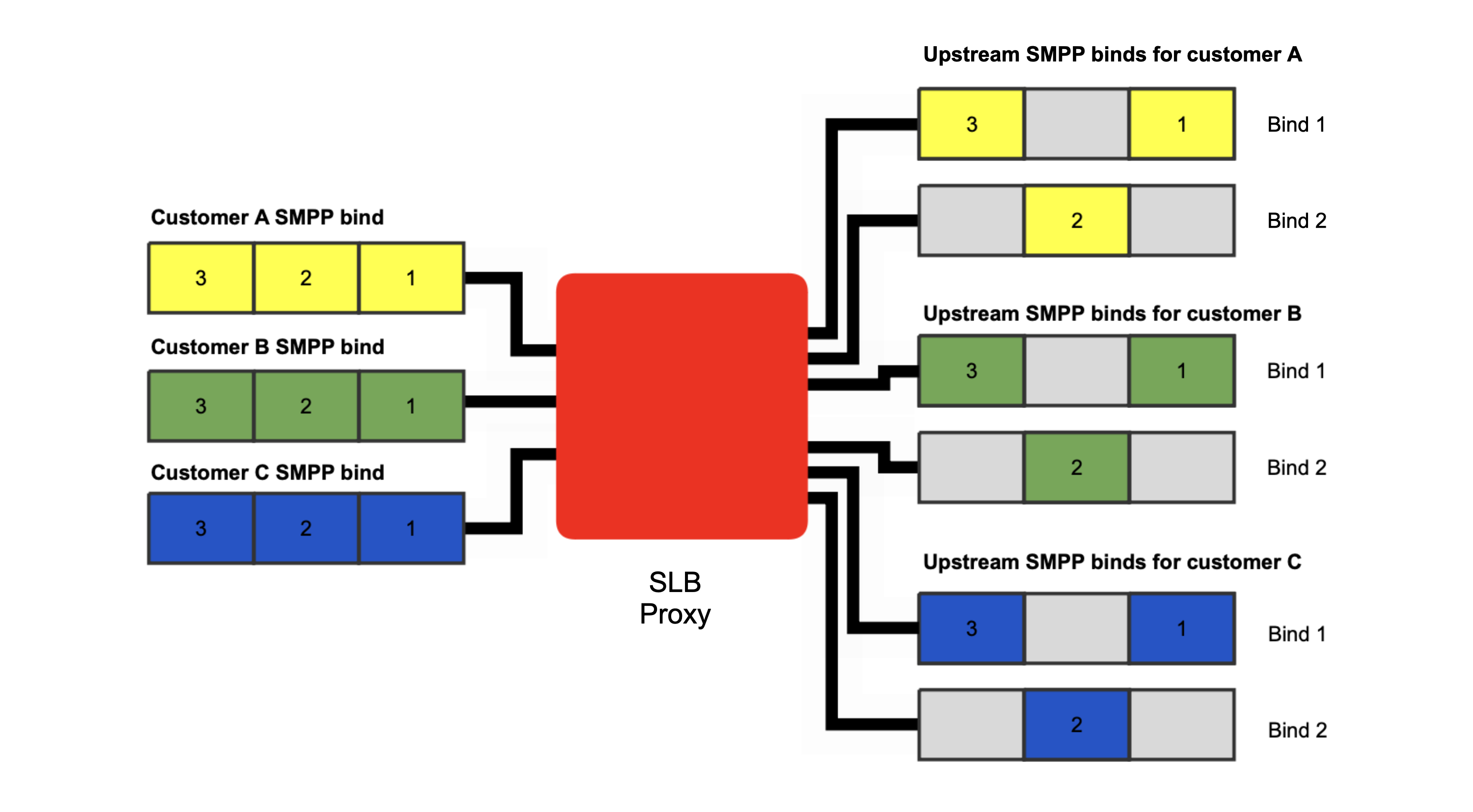
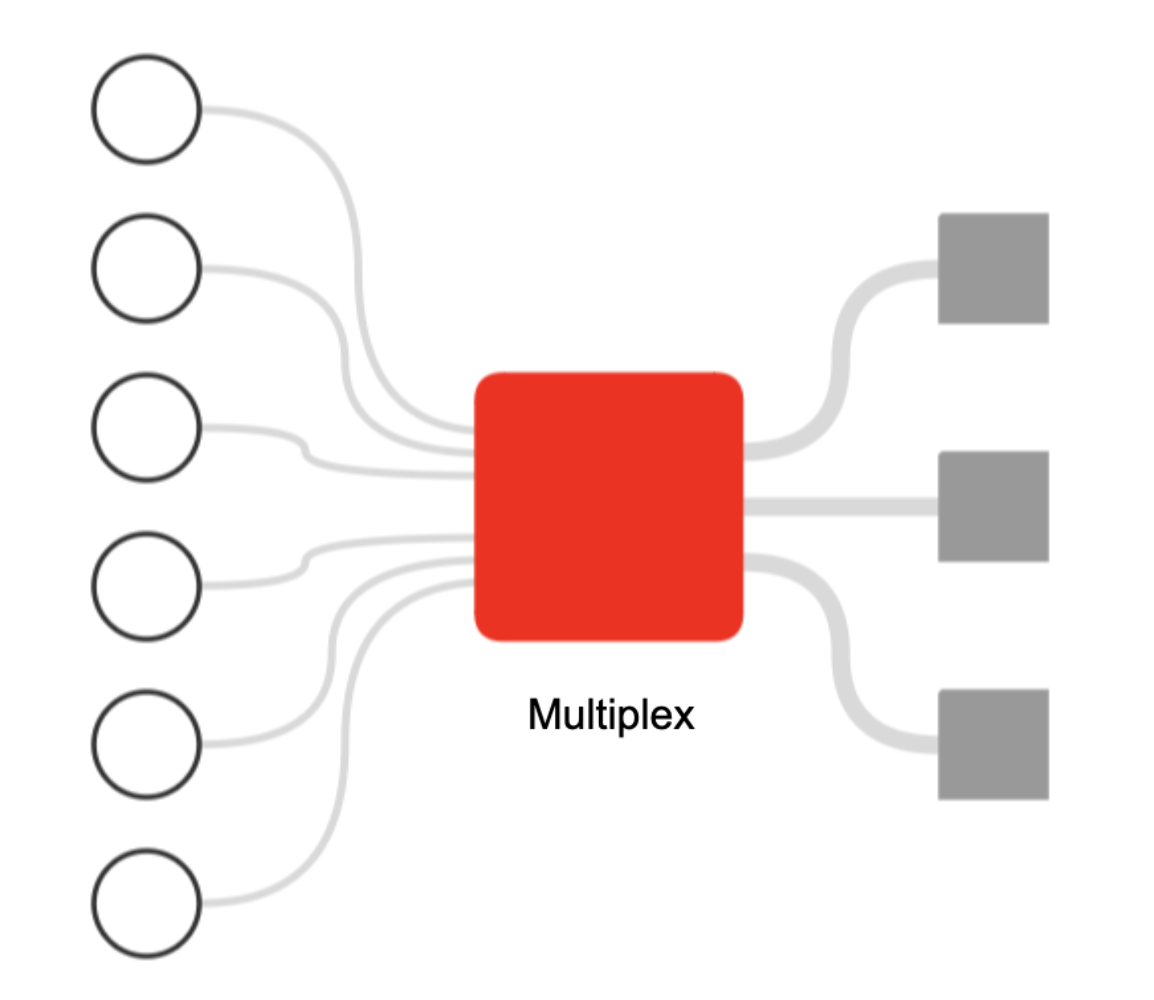
SMPP Load Balancer Multiplex
Customer-facing endpoint that multiplexes traffic onto fixed set of connections to your platforms
Customer SMPP credentials and connection details for your platforms are configured in the SMPP Load Balancer service. Your customers connect to the service instead of your platforms. The service connects to your platforms, and messages submitted by your customers are load-balanced across your platforms. Traffic from multiple customers is multiplexed onto the connections with your platforms. Delivery receipts are routed back from your platforms via the service to the customer SMPP connection that submitted the corresponding outbound message.
Also suitable as supplier-facing endpoint.
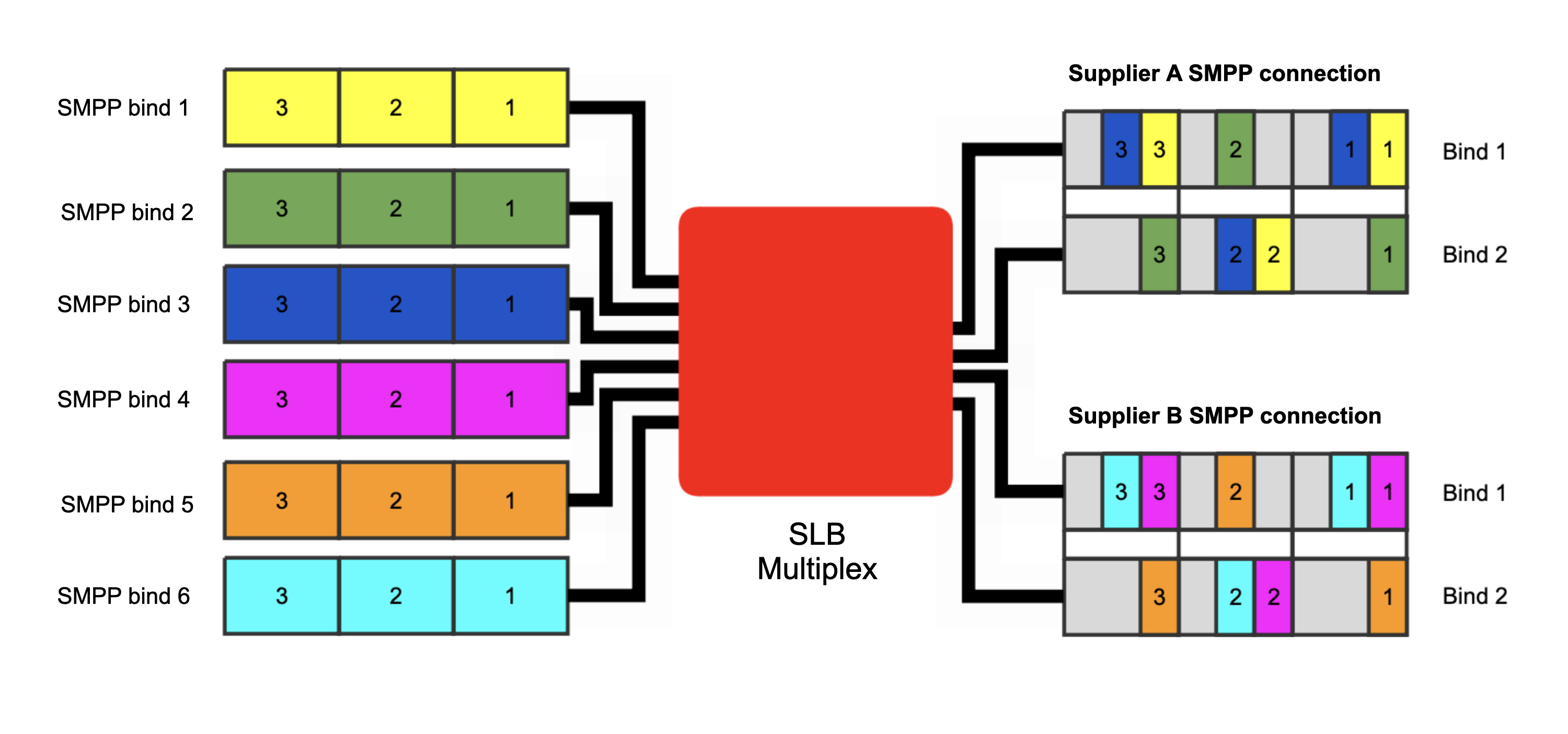
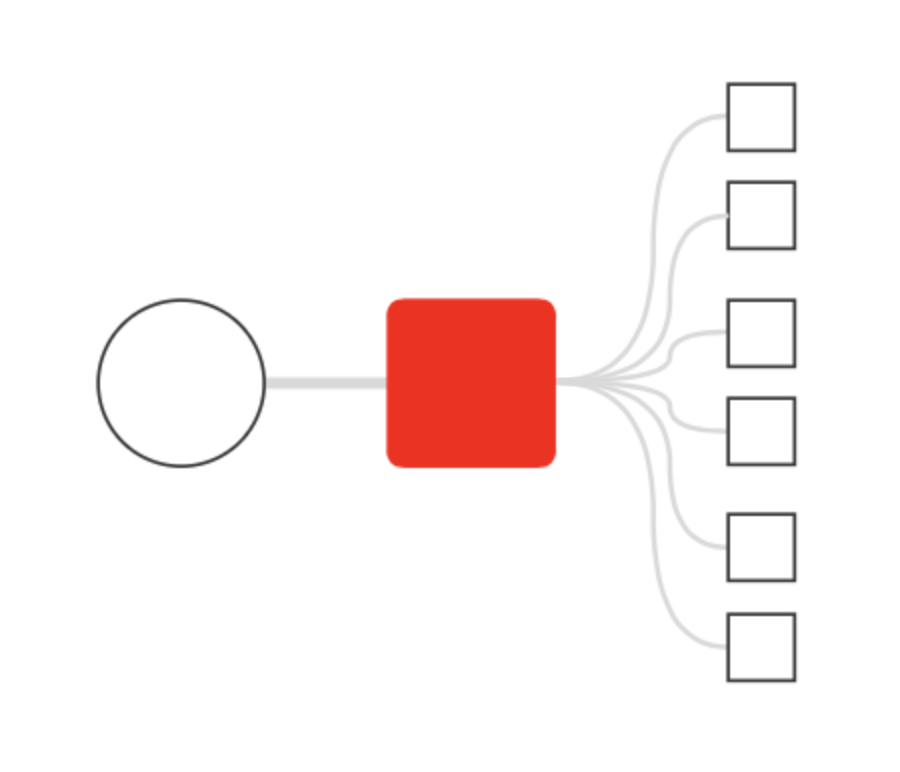
Scenario #3
SMPP Load Balancer MultiplexCustomer-facing endpoint that routes messages to supplier platforms
Customer SMPP credentials and connection details for your supplier platforms are configured in the SMPP Load Balancer service. Your customers connect to the service. The service connects to your suppliers, and messages submitted by your customers are load-balanced across those supplier connections. Traffic from multiple customers is multiplexed onto the connections with your suppliers. Delivery receipts are routed back from your suppliers via the service to the customer SMPP connection that submitted the corresponding outbound message.
This is ideal for when you don't need to operate your own platform, and are using the SMPP Load Balancer as a simple SMS gateway.

Scenario #4
SMPP Load Balancer Proxy / MultiplexUpstream endpoint for your platform or application
Use the service upstream of your platform to handle message submission to your suppliers. Your platform could be a messaging application, or an application with messaging capability, but you need more control and accounting of messaging. The SMPP Load Balancer service enables you to achieve this.
Connect an application to multiple upstream platforms by using the SMPP Load Balancer service to manage the upstream connections. Application needs only to make a single connection the service to be connected to multiple upstream platforms.

Scenario #5
SMPP Load Balancer MultiplexSMPP concentrator
Aggregate customer SMPP connections to a single SMPP supplier connection or other messaging platform.
Customer SMPP credentials and connection details for a supplier platform are configured in the SMPP Load Balancer service. Your customers connect to the service. The service connects to your supplier, and messages submitted by your customers are sent to the supplier connection. Traffic from multiple customers is multiplexed onto the connection with your supplier. Delivery receipts are routed back from your supplier via the service to the customer SMPP connection that submitted the corresponding outbound message.
| Melrose Labs SMPP Load Balancer Summary | |
|---|---|
| Client (ESME) Control |
|
| Features Supported |
|
| Routing |
|
| Worldwide Nodes |
|
| Portal |
|
| Reliability and Availability |
|
Platforms, Services and Pricing
The SMPP Load Balancer platform is available in several on-premises and cloud configurations.
On-premises platforms
Melrose Labs will supply you with the necessary binaries and technical support to fulfil your required configuration. You provide the host on which the binaries are installed. Support will be provided by Melrose Labs to assist you with the installation of the platform.
When ordering, select a RedHat (suitable for Centos, SuSE Linux, etc) or Debian (suitable for Ubuntu, Mint, etc) build.
| Type | Price (one-off) | Limits | ||
|---|---|---|---|---|
| SMPP Load Balancer Proxy | Documentation | |||
| SMPP Load Balancer Proxy Low level |
|
GBP 1995.00 per instance | 200 SMS/sec 25 upstream SMPP servers TLS supported |
Find out more |
| SMPP Load Balancer Proxy High level |
|
GBP 4995.00 per instance | 2000 SMS/sec 50 upstream SMPP servers TLS supported |
Find out more |
| SMPP Load Balancer Multiplex | Documentation | |||
| SMPP Load Balancer Multiplex Low level / High level |
|
POA per instance | 200-2000 SMS/sec 25-50 upstream SMPP servers TLS supported |
Find out more |
GBP 525 annual maintenance from year 2 (covers all instances)
Cloud platforms
| Type | Price (per month) | Limits | |
|---|---|---|---|
| SMPP Load Balancer Proxy (Shared) | |||
| SMPP Load Balancer Proxy (Shared) Free level | USD 0.00 per system ID | 5 SMS/sec 2 upstream SMPP servers Non-TLS | Find out more |
| SMPP Load Balancer Proxy (Shared) Low level | USD 25.00 per system ID | 200 SMS/sec 25 upstream SMPP servers Non-TLS | Find out more |
Shared SLBP is available at host smpplb.melroselabs.com:32775 (SMPP)
Configure system ID and upstream target SMPP servers at https://melroselabs.com/tools/slbp/shared/ .
| Type | Price (per month) | Limits | |
|---|---|---|---|
| SMPP Load Balancer Proxy | Documentation | ||
| SMPP Load Balancer Proxy Low level | GBP 195.00 per instance | 200 SMS/sec 25 upstream SMPP servers Non-TLS | Find out more |
| SMPP Load Balancer Proxy Medium level | GBP 295.00 per instance | 1000 SMS/sec 50 upstream SMPP servers TLS supported | Find out more |
| SMPP Load Balancer Proxy High level | GBP 395.00 per instance | 5000 SMS/sec 100 upstream SMPP servers TLS supported | Find out more |
| SMPP Load Balancer Multiplex | Documentation | ||
| SMPP Load Balancer Multiplex Low level / High level | POA per instance | 200-2000 SMS/sec 25-50 upstream SMPP servers Non-TLS/TLS | Find out more |
Cloud platforms (AWS Marketplace)
| Type | Price (per month) | Limits | |
|---|---|---|---|
| SMPP Load Balancer Proxy (Shared) | |||
| SMPP Load Balancer Proxy (Shared) Free level | USD 0.00 per system ID | 5 SMS/sec 2 upstream SMPP servers Non-TLS | Find out more |
| SMPP Load Balancer Proxy (Shared) Low level | USD 25.00 per system ID | 200 SMS/sec 25 upstream SMPP servers Non-TLS | Find out more |
Shared SLBP is available at host smpplb.melroselabs.com:32775 (SMPP)
Configure system ID and upstream target SMPP servers at https://melroselabs.com/tools/slbp/shared/ .
| Type | Price (per month) | Limits | |
|---|---|---|---|
| SMPP Load Balancer Proxy | Documentation | ||
| SMPP Load Balancer Proxy t3.small | USD 0.321/hr per instance (US East) | 1000 SMS/sec 50 upstream SMPP servers TLS optionally supported | Find out more |
| Type | Price (per month) | Limits | |
|---|---|---|---|
| SLB Platform - Multiplex | |||
| SMPP Load Balancer (SLB) Platform Standard
| US$0.0001/SMS | 500 SMS/sec 200 upstream SMPP servers TLS supported |
Find out more |
Service snapshot
- Load balance across multiple SMS gateways and SMSCs
- Monitoring via Prometheus/Grafana support
- Up to 5000 SMS/sec throughput
- Concatenated SMS support
- A2P SMS
- P2A SMS

